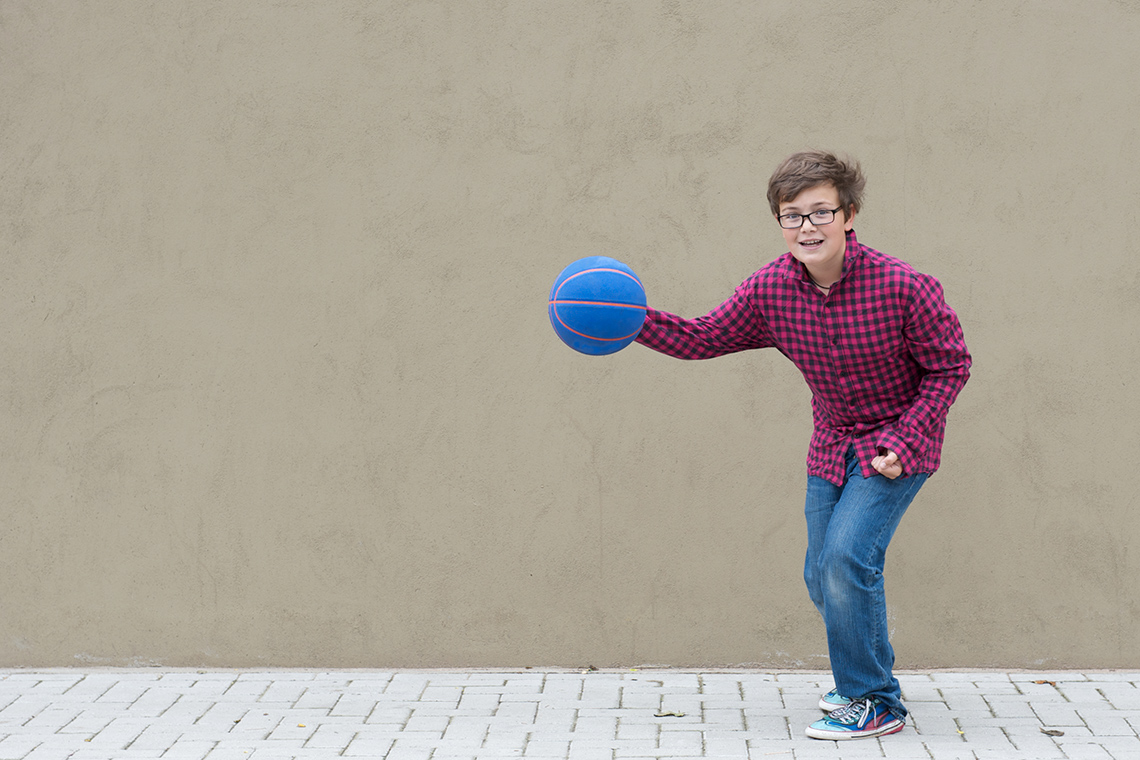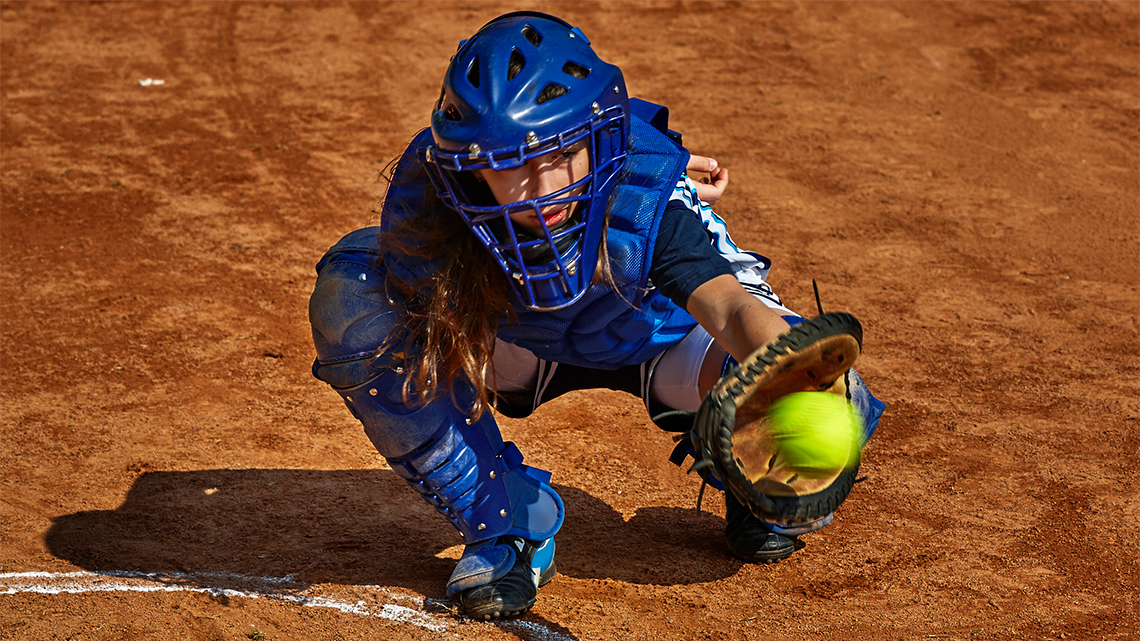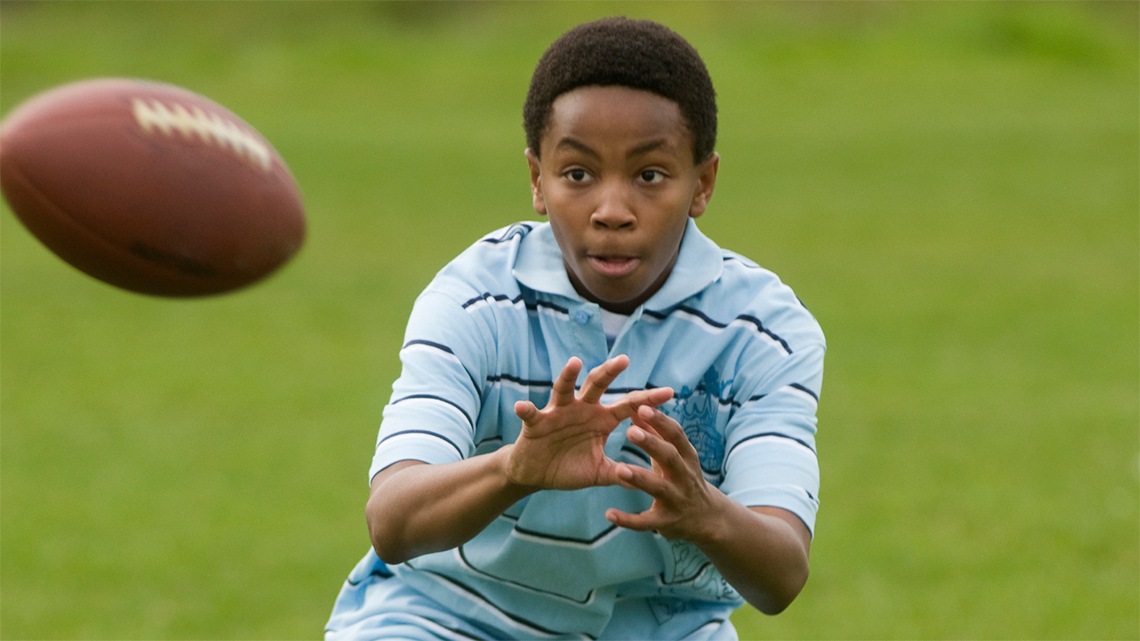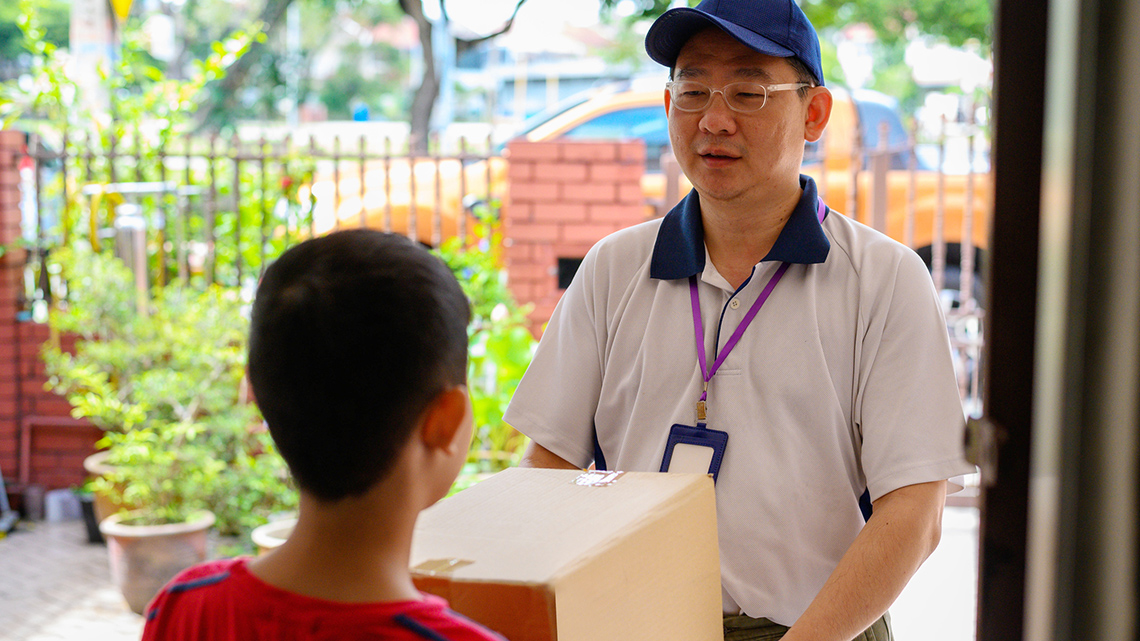Minds On
Receiving 101
What does it mean to receive something? Consider how our bodies move and explore the following images for examples of people receiving objects.
Brainstorm
Brainstorm
In what sports, games, and physical activities do participants receive objects?
Record your ideas in a notebook or a method of your choice.
Action
Styles of receiving

Receiving is a skill with the intention of catching an incoming object. For example, catching, trapping, and collecting are all forms of receiving!
When you are practising this skill, it is important to be aware of the object and to anticipate where it will land. This helps you move into a ready position.
Let’s explore various strategies for receiving objects.
Receiving an object below the chest
Press the tabs to access the steps to receive an object below the chest.

Focus on the object.

Stay behind the object.

Cup your hands in a bowl shape.

Bring the object to your body.
Receiving an object above the chest
Press the tabs to access the steps to receive an object that is above your chest.

Focus on the object.

Stay behind the object.

Put your hands together in a triangle shape. The tips of your pointer fingers and the tips of your thumbs should be touching each other.

Bring the object to your body.
Student Tips
Student tip
As you complete the following activities, remember that time and practice are needed to develop the skill of catching.
Grab it!
Let’s practise our receiving skills with some fun activities!
Safety
Before you begin, consider these safety precautions:
Fragile objects
Make sure you have open space around you. If possible, have a partner toss the ball to you.
If you do not have someone to throw you the ball, bounce it against a wall. Check that this is safe to do and that there are no objects that might get broken.
Equipment
If possible, these activities should be completed with the following equipment:
- something you can catch, like rolled-up socks, a cushion, a ball, a small bean bag or a shoelace
- tape
- chalk
Diamond send and receive
In this activity, you will learn to catch objects above and below the chest with one or two hands.
Get started

Set up two markers on a wall using tape.
- Have one above your head and the other near your feet.
- Toss the object using an underhand throw to either the top or bottom marker and catch it on the bounce.
- Switch which marker you aim for after every throw.
Depending on your throw, you will:
- toss and catch below the chest
- toss and catch above the chest
Modifications: Diamond send and receive
Press the following tabs to access different ways to complete this activity.
Below or above?
As you move through this activity, record which marker resulted in a catch below or above your chest. You may use the Diamond Send and Receive organizer in your notebook or the following fillable and printable document. If you would like, you can use speech-to-text or audio recording tools to record your thoughts.
| Marker you aimed for (top or bottom): | Where you caught the throw (below or above the chest): |
|---|---|
|
1. |
1. |
|
2. |
2. |
|
3. |
3. |
|
4. |
4. |
Press the ‘Activity’ button to access Diamond Send and Receive.
Clap catch

Clap Catch is played by throwing a ball against the wall and clapping your hands before catching it. Here’s how we’ll switch up the movements for each throw:
- Throw the ball against the wall and clap your hands once behind your back before catching the ball.
- On the second throw, clap behind your back, then in front before catching the ball.
- On the third throw, clap back, front, back, and then catch the ball.
Continue to see how many times you can clap and still catch the ball. Move closer or farther way, throw the ball higher or lower, and test your skills.
Modifications: Clap catch
You may remove the throwing and receiving part of the game and focus just on clapping. Practise clapping behind your back, over your head, and side to side.
Cool Down
Let’s slow down
It is time to rest our bodies. Before you pause and reflect on what you have learned, we need to cool down from our exercise.
Slow your heart rate with deep breaths and stretches.
Explore the following images for two different stretches to help you cool down.
Consolidation
Above or below

Now that we’ve had a chance to explore different ways of catching, let’s try to predict which type of throw results in a catch above or below the chest.
Explore the following statements about types of throws. Select the correct answer, then press “Check Answer” to see how you did.
Coach for the day

Imagine that you are now the coach for your favourite soccer, basketball, or football team, and you are teaching the players on your team how to receive the ball.
Choose an object and a sport of your choice to send and receive. What strategies for receiving will you teach? Include instructions for your players so they can understand how to get better at receiving.
Record your coaching tips in the Receiving Tips graphic organizer in your notebook or using the following fillable and printable document. If you would like, you can use speech-to-text or audio recording tools to record your thoughts.
| Name of sport: |
| Object to send and receive: |
|
Tips to improve receiving skill: 1. 2. 3. 4. |
Press the ‘Activity’ button to access Receiving Tips.
Try It
Try it
You must also demonstrate the skills you learned in the Action section to teach the players of your team. Record yourself completing the movements that you have suggested to your team in a method of your choice.
Let's review
- How did where you throw influence how you received an object?
- How does movement influence your ability to catch?
- How do you know when to use each catching technique?
Reflection
As you read through these descriptions, which sentence best describes how you are feeling about your understanding of this learning activity? Press the button that is beside this sentence.
I feel…
Now, record your ideas using a voice recorder, speech-to-text, or writing tool.






